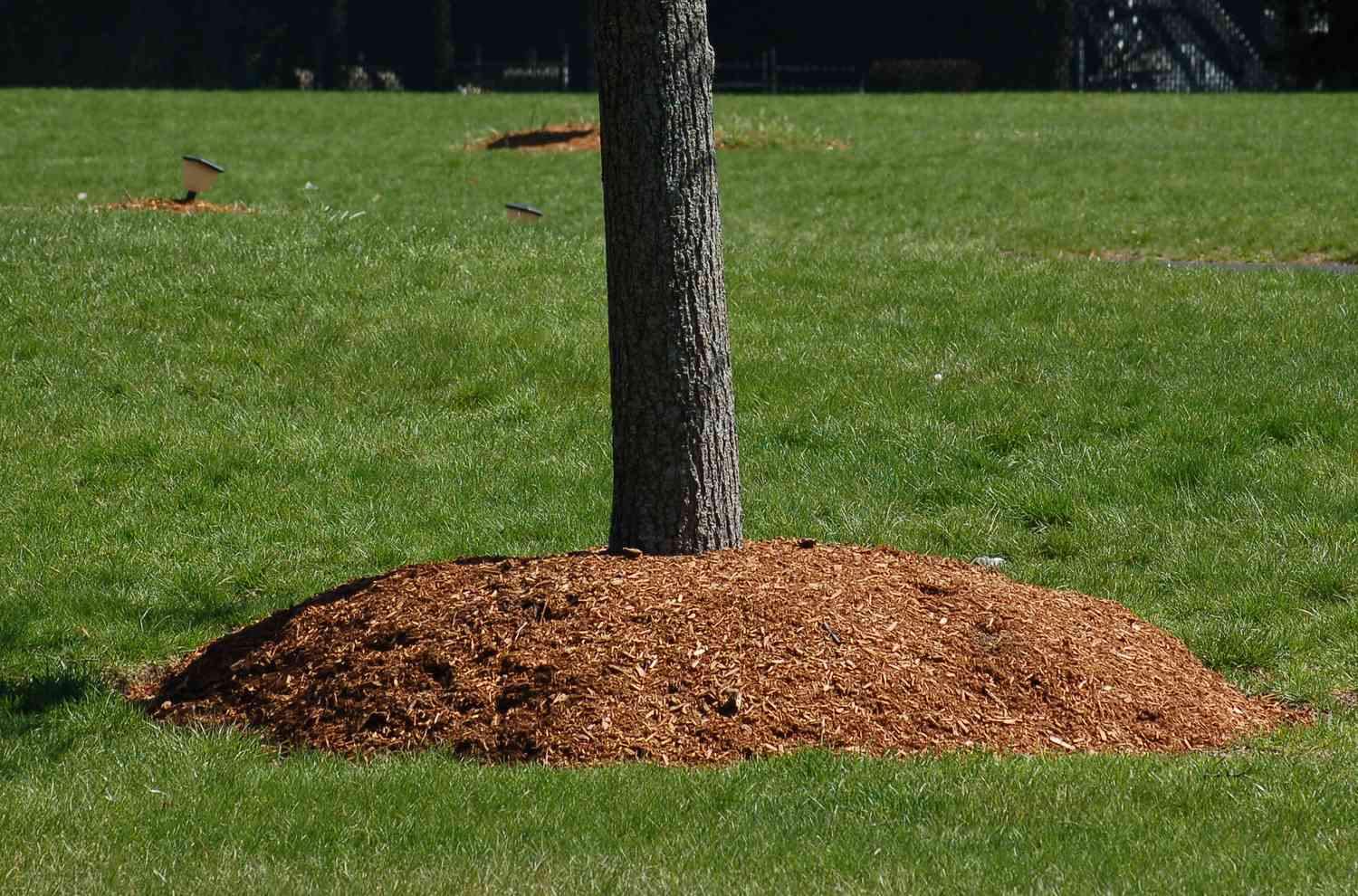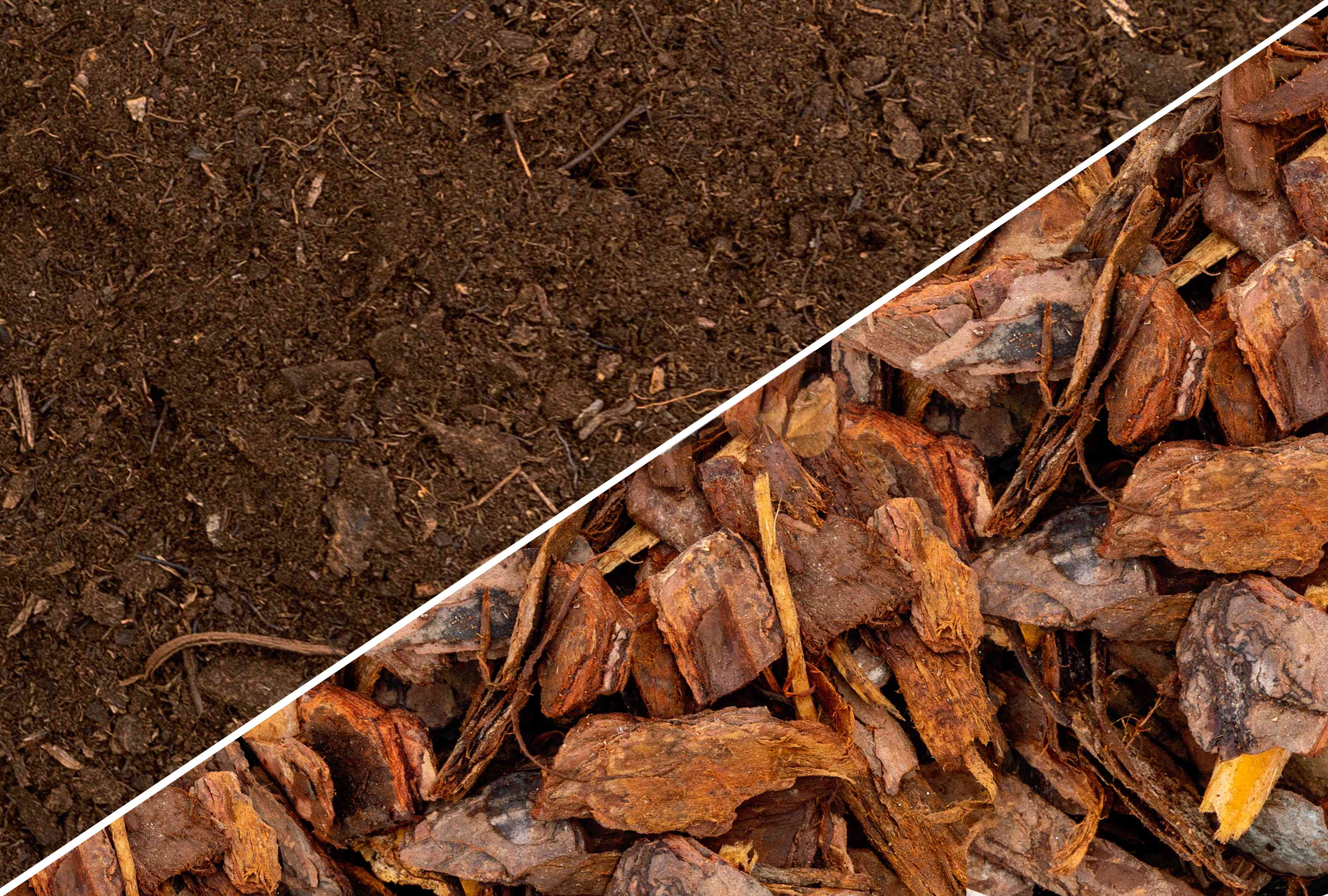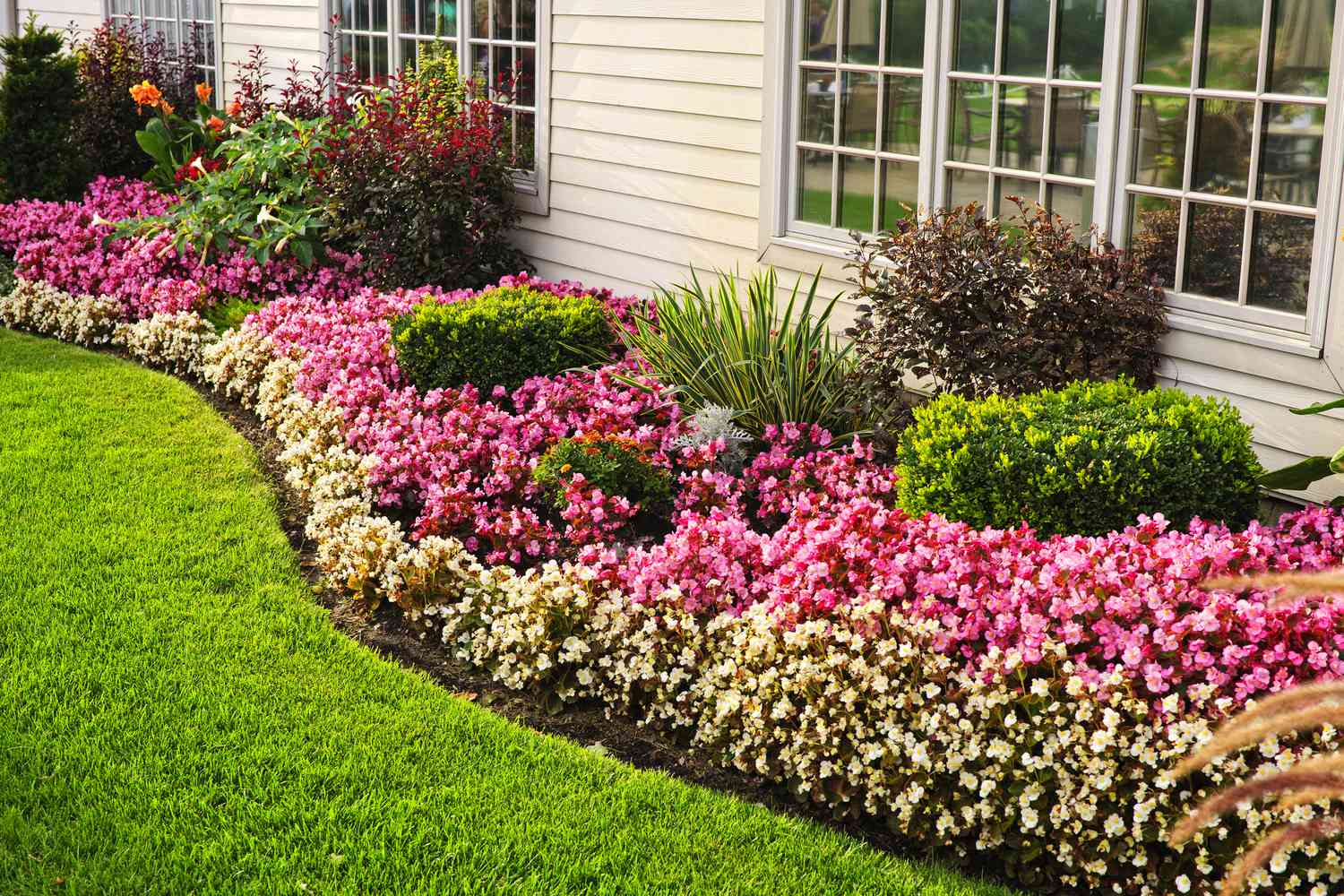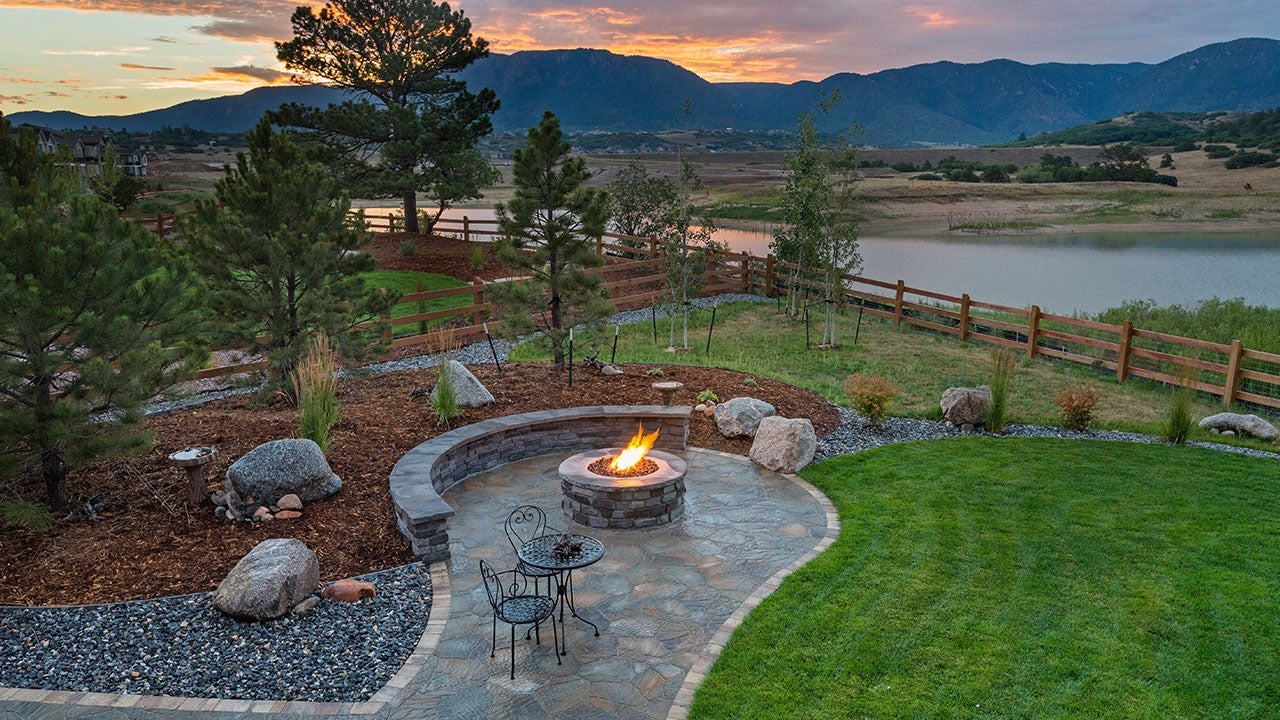Home>Gardening Tips and Tricks>Eco-Friendly Gardening>How To Mulch Landscaping
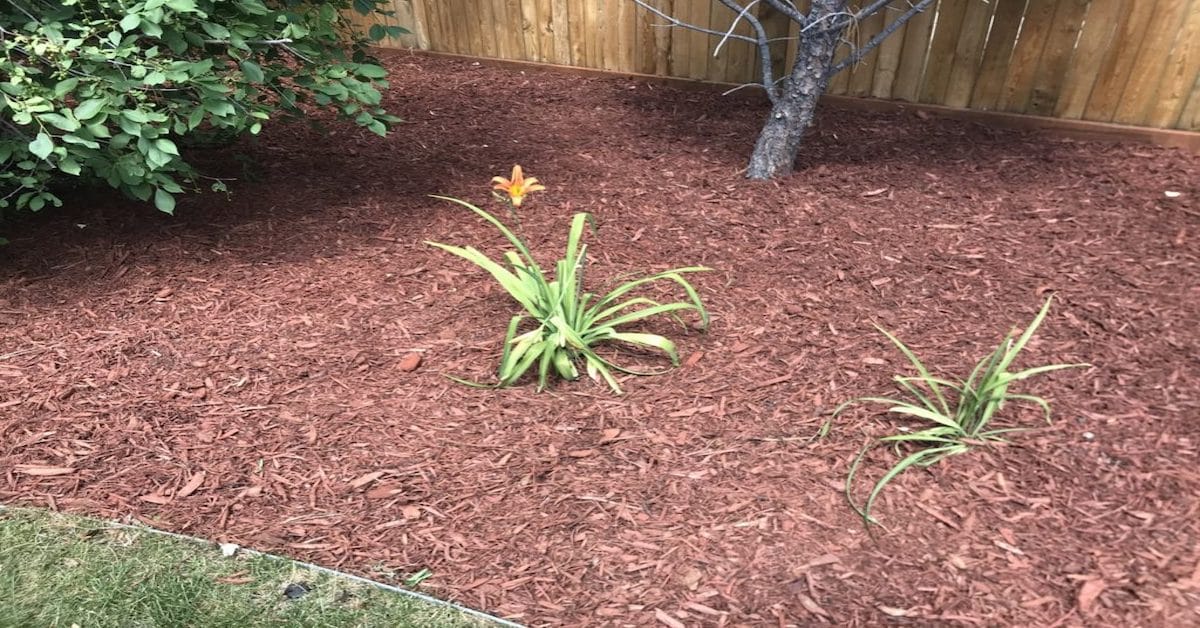

Eco-Friendly Gardening
How To Mulch Landscaping
Modified: February 6, 2024
Learn how to mulch your landscaping using eco-friendly gardening techniques for a sustainable and beautiful outdoor space. Take steps to protect your soil, conserve water, and promote healthy plant growth.
(Many of the links in this article redirect to a specific reviewed product. Your purchase of these products through affiliate links helps to generate commission for Chicagolandgardening.com, at no extra cost. Learn more)
Table of Contents
Introduction
Welcome to the world of eco-friendly gardening! In a time when environmental consciousness is at its peak, more and more people are turning to sustainable practices in their everyday lives, including gardening. Eco-friendly gardening is all about ensuring that our gardening practices have minimal impact on the environment while creating beautiful and vibrant outdoor spaces. One key aspect of eco-friendly gardening is mulching.
Mulching is the process of covering the soil surface with a protective layer of organic or inorganic material. It offers numerous benefits, not only to the plants but also to the environment as a whole. By mulching our landscapes, we can conserve water, suppress weed growth, improve soil health, and enhance the overall aesthetics of our garden.
In this comprehensive guide, we will take a closer look at the different types of mulch available, how to choose the right mulch for your specific needs, the steps to prepare your landscape for mulching, and how to properly apply and maintain mulch. We will also provide you with some valuable tips to ensure that your mulching efforts are effective and sustainable.
So, whether you are a seasoned gardener looking to adopt eco-friendly practices or a beginner with a passion for sustainable living, this article will equip you with the knowledge and tools to create a beautiful and eco-friendly garden through the art of mulching.
Benefits of Mulching
Mulching offers a multitude of benefits to both plants and the environment. Let’s dive into some of the key advantages of incorporating mulch into your gardening practices:
- Water Conservation: One of the primary benefits of mulching is its ability to conserve water. Mulch acts as a protective barrier, reducing evaporation and helping to retain moisture in the soil. This means less frequent watering and a more efficient use of water resources.
- Weed Suppression: Mulch acts as a natural weed deterrent by preventing weed seeds from germinating and competing with your plants for nutrients and water. The layer of mulch helps to smother existing weeds and inhibits their growth, reducing the need for manual weeding or the use of herbicides.
- Soil Health Improvement: Mulch plays a vital role in enhancing soil health. As it decomposes over time, organic mulch enriches the soil with essential nutrients, such as nitrogen, phosphorus, and potassium. It also improves soil structure and promotes beneficial microbial activity, creating a thriving environment for plant roots.
- Temperature Regulation: Mulch acts as an insulating layer, regulating soil temperature by keeping it cooler in the summer and warmer in the winter. This helps to protect plant roots from extreme temperature fluctuations, reducing stress and promoting healthy growth.
- Erosion Control: By providing a protective layer over the soil, mulch helps to prevent erosion caused by wind and rain. It stabilizes the soil, reducing the risk of runoff and soil loss, particularly on sloping areas or during heavy downpours.
- Aesthetic Enhancement: Mulch adds visual appeal to your garden, creating a polished and finished look. It comes in a variety of colors and textures, allowing you to choose the type of mulch that complements your landscape design and personal style.
These are just a few of the many benefits that mulching offers. By incorporating mulch into your gardening routine, you can conserve water, suppress weeds, improve soil health, regulate temperature, control erosion, and beautify your outdoor space in an environmentally friendly way.
Types of Mulch
When it comes to mulching, there are various types of mulch to choose from. Each type has its own unique characteristics and advantages. Let’s explore some commonly used types of mulch:
- Organic Mulch: Organic mulch is made from natural materials such as wood chips, shredded bark, straw, leaves, grass clippings, and compost. It provides numerous benefits to the soil as it breaks down, enhancing fertility and improving moisture retention. Organic mulch is aesthetically pleasing and is commonly used in flower beds, vegetable gardens, and around trees and shrubs.
- Inorganic Mulch: Inorganic mulch includes materials like stones, gravel, landscape fabric, and rubber mulch. Unlike organic mulch, inorganic mulch does not decompose and has a longer lifespan. Inorganic mulch is ideal for areas prone to erosion or where a more permanent solution is desired. However, it does not add nutrients to the soil like organic mulch.
- Living Mulch: Living mulch involves using ground covers or low-growing plants to cover the soil surface. Plants such as clover, creeping thyme, or creeping phlox can function as living mulch, providing similar benefits as traditional mulch. Living mulch not only helps with moisture retention and weed suppression but also adds beauty and diversity to the garden.
- Rubber Mulch: Made from recycled rubber tires, rubber mulch is a popular choice for playgrounds and areas where impact absorption is crucial, as it provides cushioning to prevent injuries. It is long-lasting, does not decompose, and helps with weed control. However, it should be noted that rubber mulch does not provide any nutritional benefits to the soil.
- Straw Mulch: Straw mulch is commonly used in vegetable gardens and is particularly beneficial for moisture retention and weed suppression. It can also help regulate soil temperature and protect delicate plant roots during extreme weather conditions.
These are just a few examples of the many types of mulch available. When choosing the right mulch for your garden, consider factors such as the specific needs of your plants, aesthetic preferences, and the climate and conditions of your region. It’s also important to ensure that the mulch you choose is from sustainable and eco-friendly sources.
Choosing the Right Mulch
Choosing the right mulch for your garden can make a significant difference in the overall health and appearance of your plants. Here are some factors to consider when selecting the ideal mulch:
- Plant Needs: Different plants have varying requirements when it comes to mulch. Some prefer moisture-retentive organic mulches, while others thrive with inorganic mulches that allow for better drainage. Take into account the specific needs of your plants, such as their water requirements, preferred soil pH, and root depth, to determine the most suitable mulch.
- Garden Conditions: Consider the unique conditions of your garden, including the amount of sunlight, soil type, and climate. For example, if you have a sunny garden with sandy soil that tends to dry out quickly, you may opt for mulches that retain moisture, such as wood chips or compost. On the other hand, if you have a shady garden with heavy clay soil, mulches that improve drainage, like gravel or stone, might be a better choice.
- Aesthetic Appeal: Mulch can greatly enhance the visual appeal of your garden. Consider the overall design and style you want to achieve. Organic mulches like shredded bark or straw provide a natural and rustic look, while stone or rubber mulches offer a more polished and contemporary appearance. Choose a mulch that complements the aesthetic of your garden and adds to its beauty.
- Sustainability: It’s important to select mulch that is eco-friendly and sustainable. Look for mulches made from renewable resources and avoid those that contain chemicals or harmful additives. Consider using local and recycled materials whenever possible to minimize your environmental impact.
- Availability and Cost: Take into account the availability of mulch options in your area and consider your budget. Some mulches may be readily available, while others may need to be sourced from specialized suppliers. Keep in mind that the cost of mulch can vary depending on the type, quantity, and quality, so choose an option that fits your budget.
By considering these factors, you can choose the right mulch that not only meets the needs of your plants but also enhances the overall aesthetic appeal of your garden. Remember to regularly assess the condition of your mulch and make any necessary adjustments to maintain its effectiveness.
Preparing the Landscape for Mulching
Before applying mulch to your landscape, it’s important to properly prepare the area to ensure maximum effectiveness. Follow these steps to prepare your landscape for mulching:
- Clean the Area: Begin by removing any existing weeds, debris, or rocks from the area where you plan to apply mulch. This will create a clean and tidy surface for the mulch to be spread.
- Trim and Prune: Take the time to trim and prune any overgrown plants or shrubs in the area. This will not only improve the overall appearance of the landscape but also prevent the mulch from smothering the plants.
- Apply Weed Barrier: If you want to further suppress weed growth, consider laying down a weed barrier, such as landscape fabric, before applying the mulch. This will create an additional layer of protection against weeds.
- Assess Soil Moisture: Check the moisture levels of the soil. If the soil is dry, consider giving it a good watering before applying the mulch. Moist soil will help the mulch retain moisture and promote healthier plant growth.
- Apply Fertilizer: If your soil lacks nutrients, consider applying a slow-release organic fertilizer before spreading the mulch. This will provide a nutrient boost to your plants and further enhance their overall health and vitality.
- Edge the Beds: Create neat and defined edges for your beds by using an edging tool or installing edging materials like stones or metal strips. This will prevent the mulch from spreading into unwanted areas and give your landscape a polished look.
By following these steps, you will ensure that your landscape is properly prepared for mulching. This will allow the mulch to perform optimally and provide the desired benefits to your plants and soil. Taking the time to prepare the area before applying mulch will set the stage for a successful and visually appealing garden.
Applying Mulch
Once you have prepared your landscape, it’s time to apply the mulch. Follow these steps to ensure a proper and effective application:
- Calculate the Quantity: Determine the amount of mulch you will need to cover the desired area. Measure the length and width of the space and multiply them to get the square footage. Refer to the manufacturer’s recommendations for the recommended depth of mulch, typically around 2-3 inches.
- Prepare the Mulch: If you are using bagged mulch, open the bags and fluff the mulch to break up any clumps. If you are using bulk mulch, make sure it has been properly stored and is free from contaminants or weed seeds.
- Spread Evenly: Using a rake or shovel, spread the mulch evenly across the prepared area. Start from one edge and work your way towards the center, ensuring a consistent layer of mulch throughout. Avoid piling up mulch against the base of plants, as this can create a moist environment that promotes rot and disease.
- Leave Breathing Space: Be mindful not to completely cover the base of trees, shrubs, or plant stems with mulch. Leave a small space around the stems and trunks to allow for proper air circulation and prevent moisture buildup.
- Smooth and Level: After spreading the mulch, use a rake or your hands to smooth and level the surface. This will give your landscape a neat and polished look while ensuring that the mulch is adequately distributed and covers the soil surface.
- Water and Settle: Once the mulch has been applied, lightly water the area to help settle the mulch and encourage it to conform to the soil surface. This will prevent it from easily washing away during heavy rains or winds.
By following these steps, you can ensure a proper and effective application of mulch. Remember to periodically check the mulch layer and replenish it as needed, especially if it has started to thin out or decompose. Applying mulch in the correct manner will maximize its benefits and help promote a healthy and thriving garden.
Maintaining Mulch
Proper maintenance of mulch is essential to ensure its longevity and effectiveness. Here are some key tips for maintaining mulch in your garden:
- Monitor Moisture Levels: Regularly check the moisture levels of the soil beneath the mulch. While mulch helps retain moisture, it’s important to ensure that the soil is not overly saturated or too dry. Adjust your watering schedule accordingly to maintain the ideal moisture balance for your plants.
- Watch for Weed Growth: Keep an eye out for any weed growth within the mulch layer. Remove any weeds as soon as they appear to prevent them from establishing and competing with your plants for nutrients and water.
- Refresh Mulch as Needed: Over time, mulch can break down and decompose. Check the thickness of the mulch layer periodically and add fresh mulch as needed to maintain the recommended depth, usually around 2-3 inches. This will help ensure that the benefits of mulching, such as weed suppression and moisture retention, are continually provided.
- Prevent Mulch Compaction: Avoid compacting the mulch layer by walking or placing heavy objects on it. Compacted mulch can hinder air circulation and prevent proper water penetration, leading to potential issues such as root rot. Fluff and loosen the mulch occasionally to maintain its texture and effectiveness.
- Protect Against Erosion: In areas prone to erosion, add additional layers of mulch or use erosion control techniques such as installing mulch mats or retaining walls. This will help stabilize the soil and prevent the mulch from being washed away during heavy rainfall or strong winds.
- Inspect for Pest or Disease Issues: Regularly inspect the mulch and surrounding plants for any signs of pests or diseases. Remove any affected plant material or pests promptly to prevent the spread and protect the overall health of your garden.
Maintaining mulch is an ongoing process that requires regular attention and care. By following these maintenance tips, you can extend the lifespan of your mulch and ensure that it continues to provide its intended benefits to your garden.
Tips for Effective Mulching
To make the most of your mulching efforts and achieve optimal results in your garden, consider the following tips:
- Apply Mulch at the Right Time: Mulch is best applied in the spring or fall when the soil is moist and the temperature is moderate. This allows the mulch to help retain moisture and regulate soil temperature during periods of extreme heat or cold.
- Avoid Overmulching: While mulch offers many benefits, too much of it can be detrimental. Avoid piling mulch against the base of plants or creating mulch mountains. The mulch should be spread evenly at an appropriate depth, typically around 2-3 inches, to allow for proper air circulation and prevent moisture issues.
- Use Mulch as a Layered System: Consider layering different types of mulch for added benefits. For example, you could use a layer of organic mulch to improve soil fertility and moisture retention, topped with an inorganic mulch like stone or gravel for a visually appealing finish and added weed suppression.
- Leave Space near Woody Stems: When applying mulch around trees, shrubs, or woody stems, leave a small gap between the mulch and the base of the plant. Direct contact between mulch and plant stems can create a moist environment that promotes rot and pest infestation.
- Mulch Beyond the Planting Area: Extend the mulch layer beyond the immediate base of your plants. This helps create a larger area that benefits from moisture retention and weed suppression. However, be cautious not to mulch too close to tree trunks, as it can lead to bark rot and disease susceptibility.
- Monitor and Adjust Moisture Levels: Regularly monitor the moisture levels of the soil beneath the mulch. Adjust your watering schedule accordingly to ensure that the plants receive proper hydration without oversaturating the soil.
- Rotate Mulch Types: Consider rotating the type of mulch you use over time. This can help prevent the buildup of certain pests or diseases that may be attracted to a specific mulch material.
- Remove Decomposed Mulch: As mulch decomposes, it may become compacted and lose its effectiveness. Periodically remove decomposed mulch and replace it with fresh mulch to maintain the desired benefits.
- Consider Local and Sustainable Options: Whenever possible, choose locally sourced and sustainable mulch options. This reduces carbon emissions during transportation and supports local businesses and ecosystems.
By following these tips, you can ensure that your mulching efforts are effective and sustainable, creating a thriving and visually pleasing garden.
Conclusion
Eco-friendly gardening practices, such as mulching, play a significant role in creating beautiful and sustainable outdoor spaces. Mulching offers a range of benefits, including water conservation, weed suppression, improved soil health, temperature regulation, erosion control, and aesthetic enhancement. By choosing the right type of mulch, preparing the landscape properly, and applying and maintaining the mulch effectively, you can maximize these benefits and promote a healthy and thriving garden.
When selecting mulch, consider the specific needs of your plants, the conditions of your garden, and the aesthetic appeal you desire. Organic mulch, such as wood chips or straw, is a popular choice for its ability to enrich the soil and create a natural look. Inorganic mulch, such as stones or rubber, offers a longer-lasting option with low maintenance. Living mulch and straw mulch provide additional options depending on the look and function you want to achieve.
Preparing your landscape for mulching involves cleaning the area, trimming plants, applying weed barriers, and ensuring proper soil moisture and nutrition. When applying the mulch, spread it evenly and leave space around plant stems. Regularly monitor moisture levels, weed growth, and mulch thickness to make necessary adjustments. By maintaining the mulch through practices like watering, refreshing, preventing compaction, and inspecting for pests or diseases, you can ensure its effectiveness in your garden.
By following these guidelines and incorporating eco-friendly mulching practices into your gardening routine, you can create a sustainable and visually stunning outdoor space. Embrace the art of mulching and enjoy the benefits it brings to your plants, soil, and environment.

